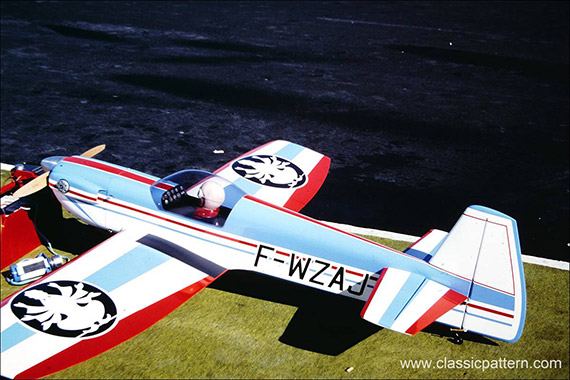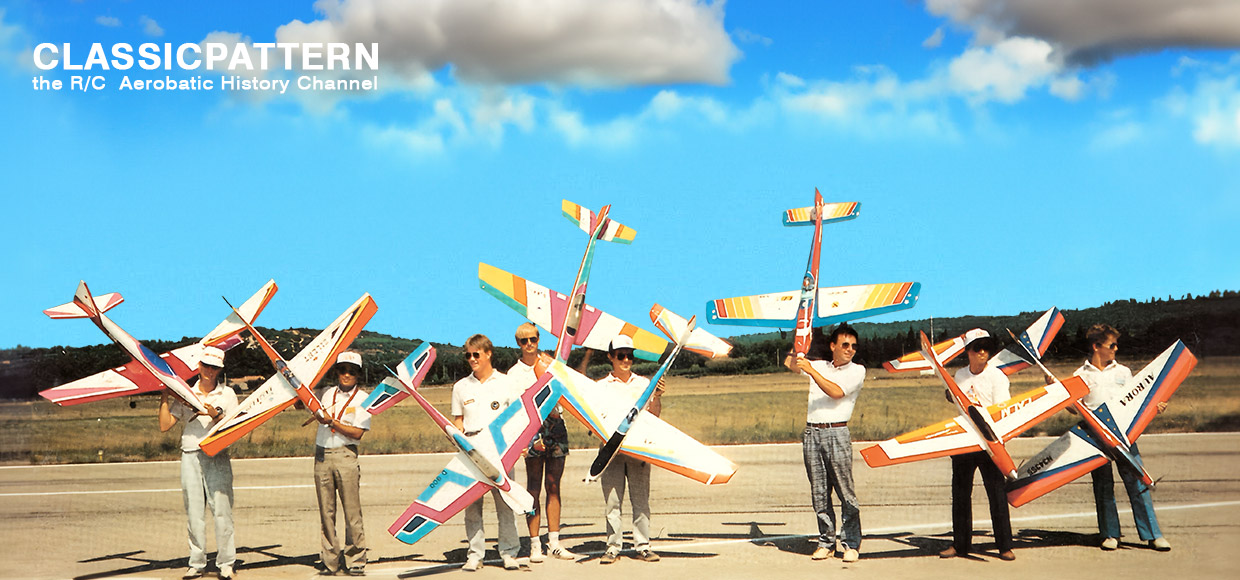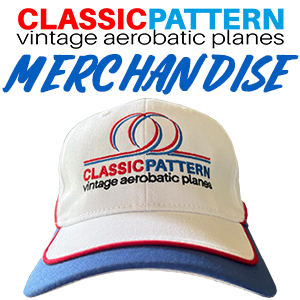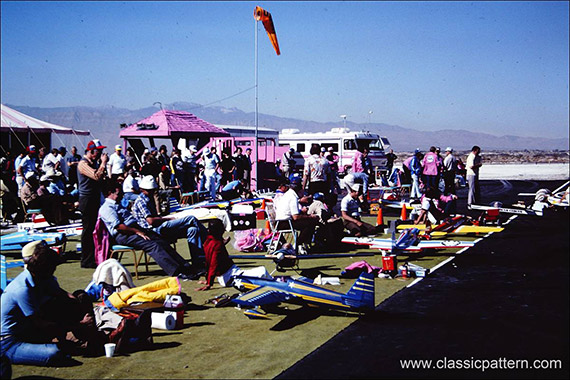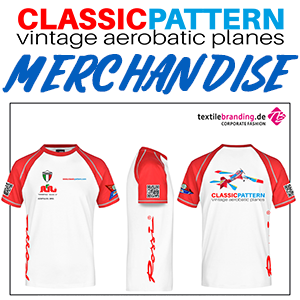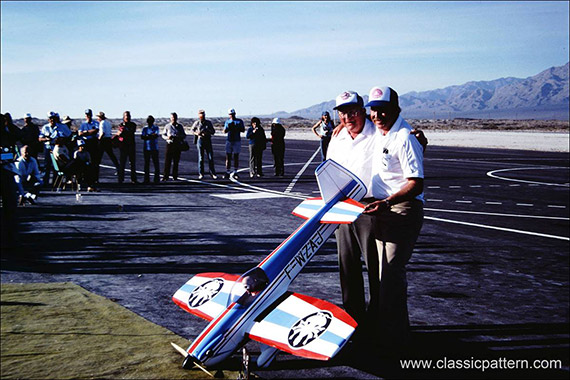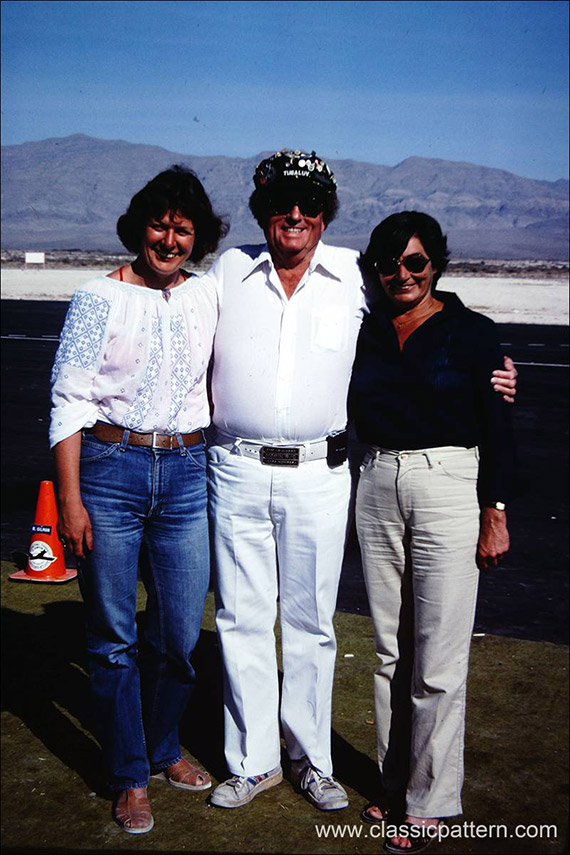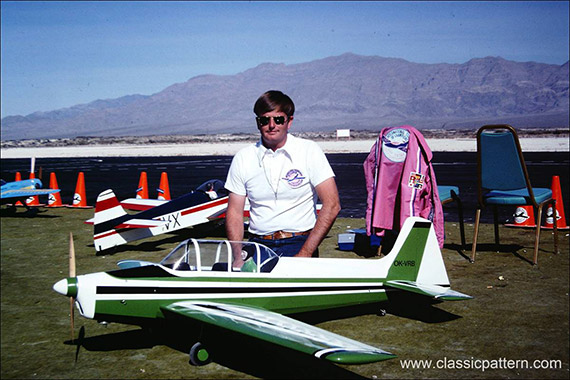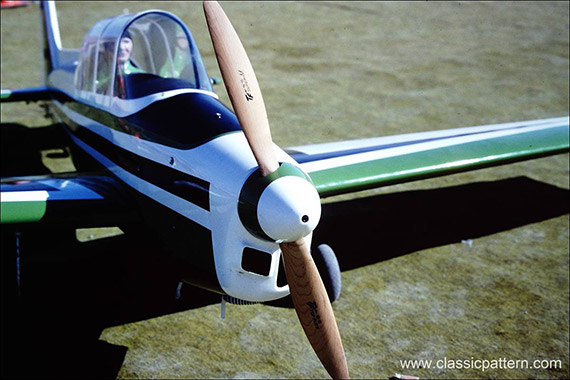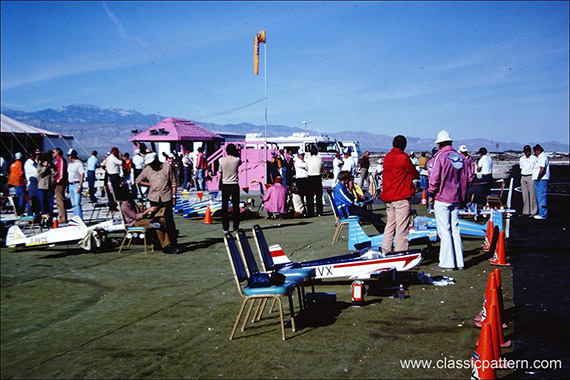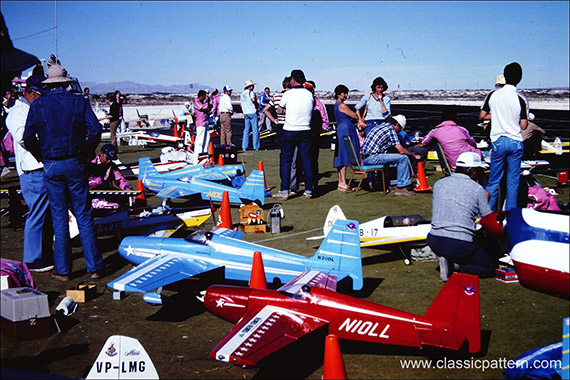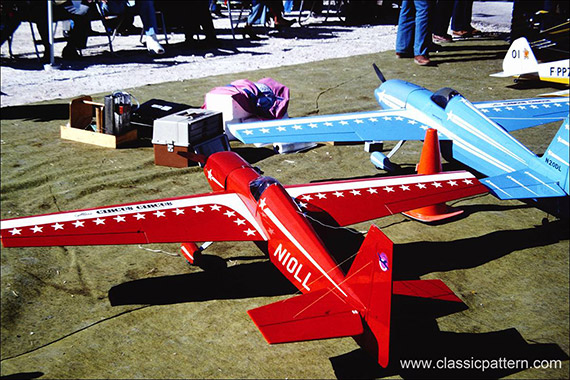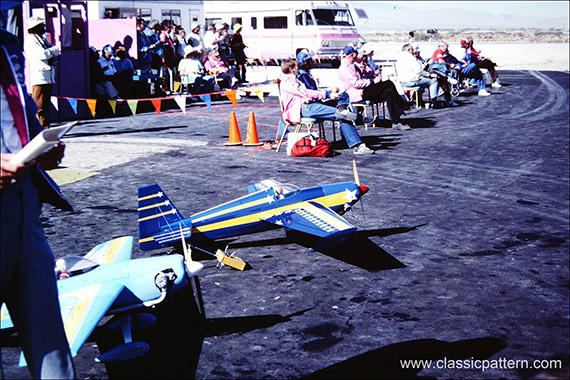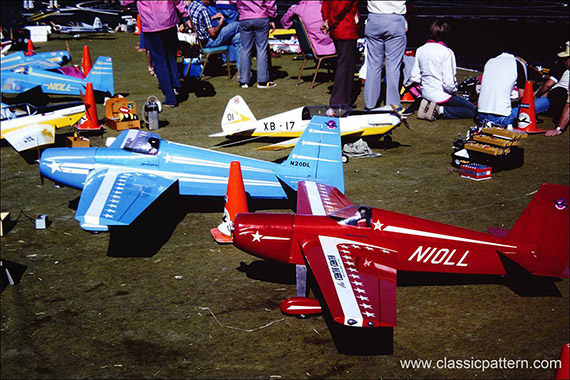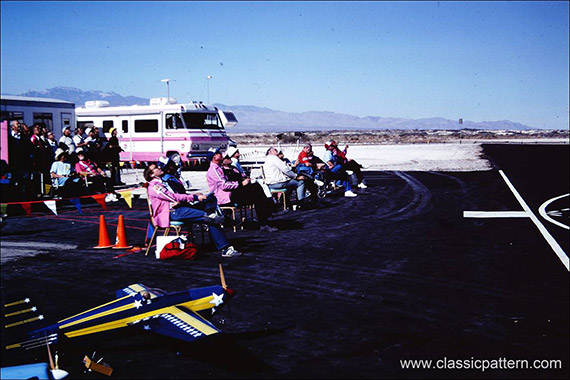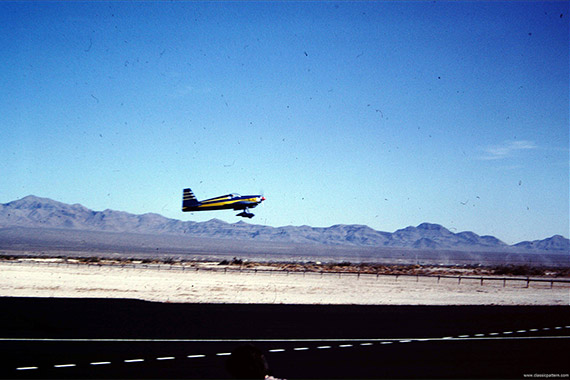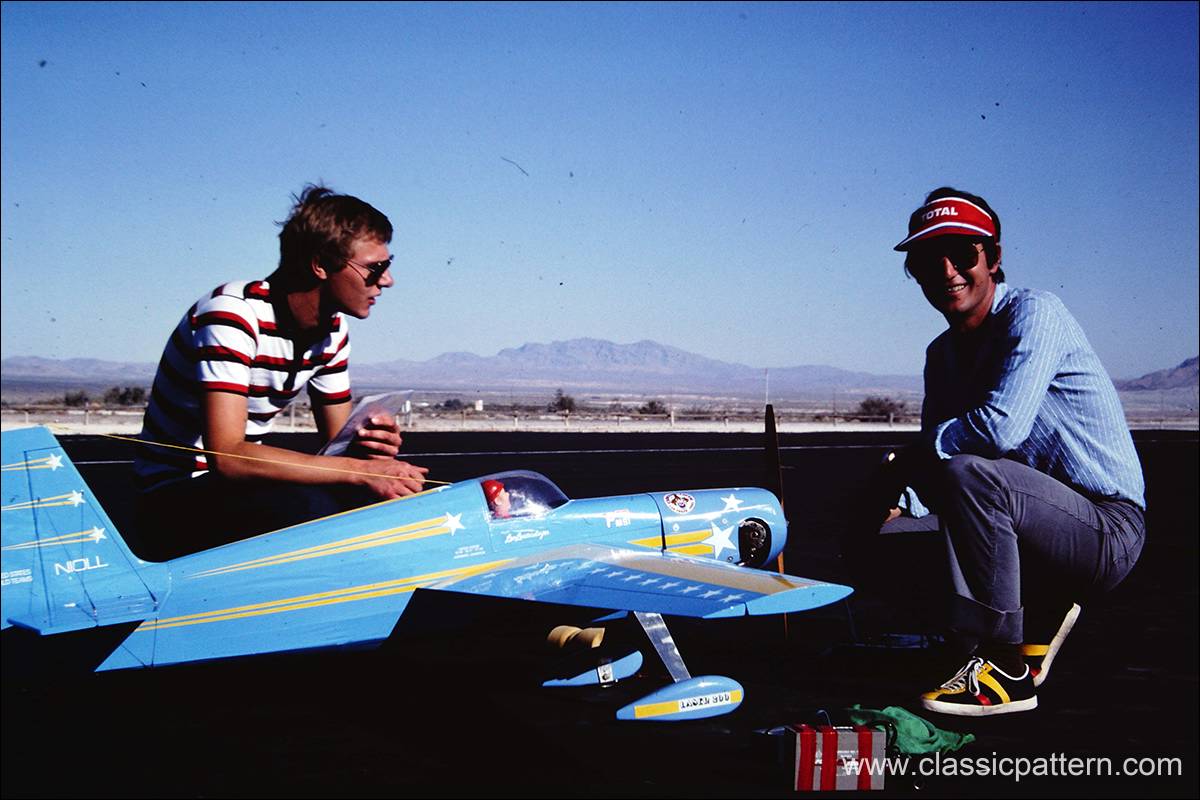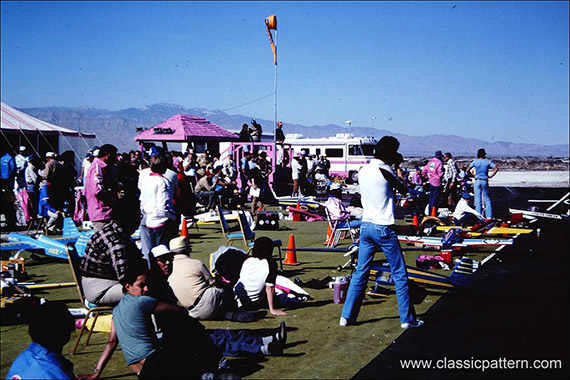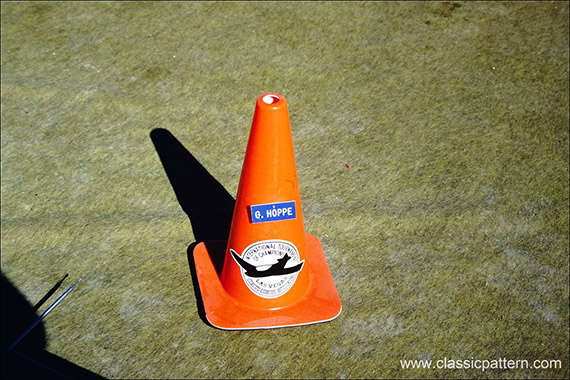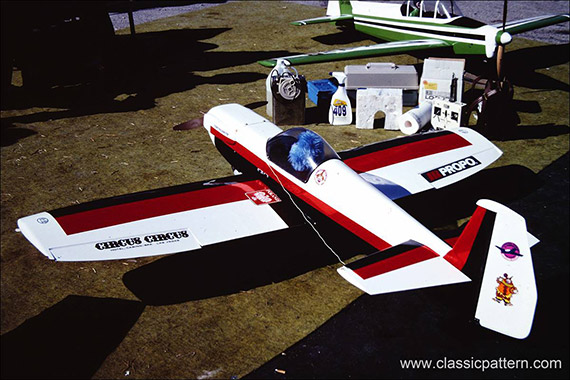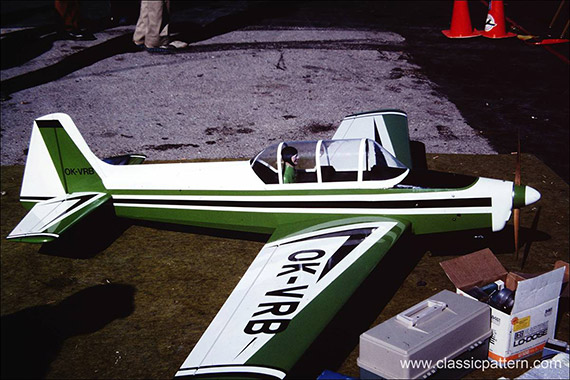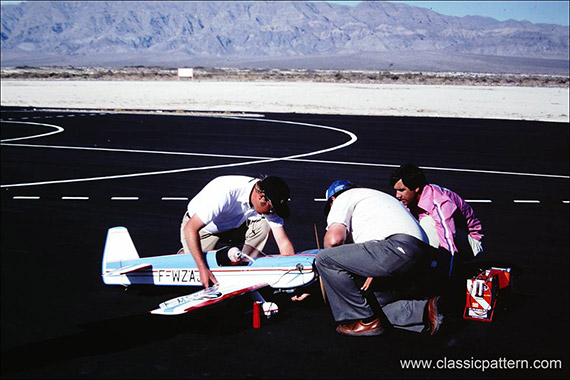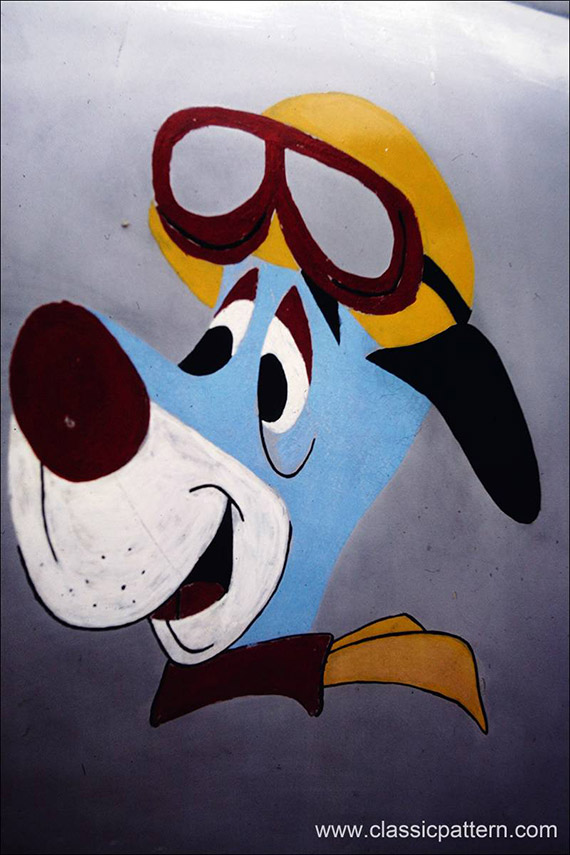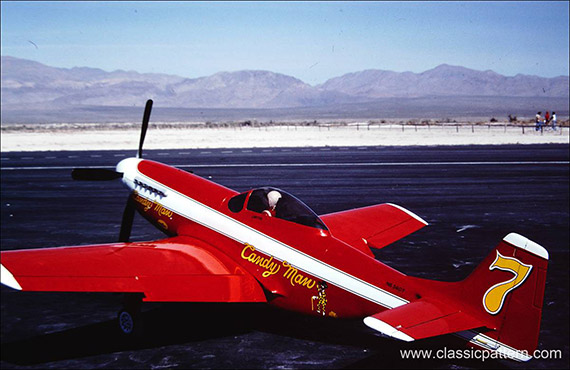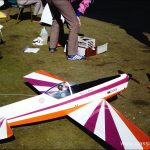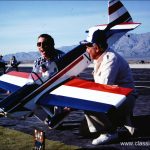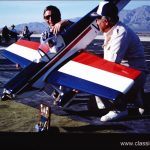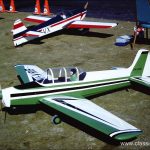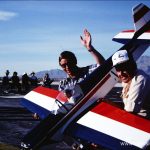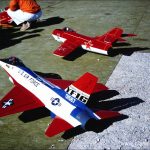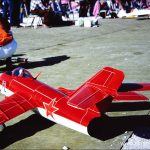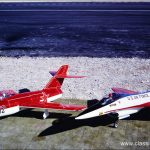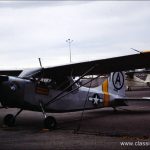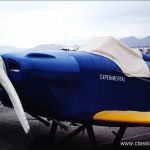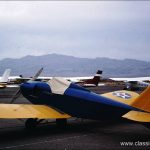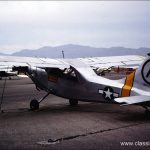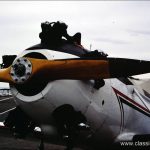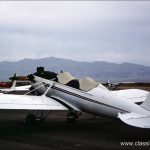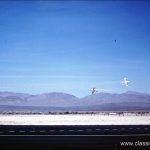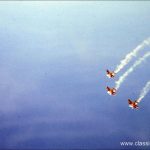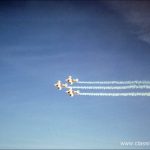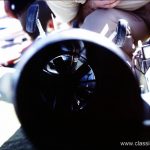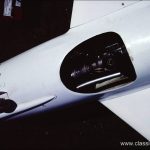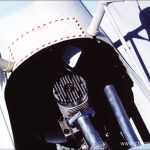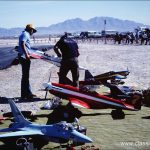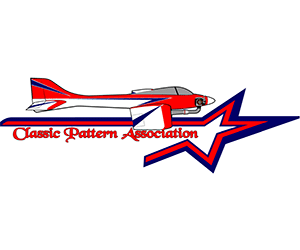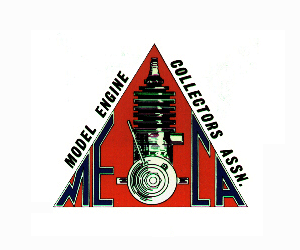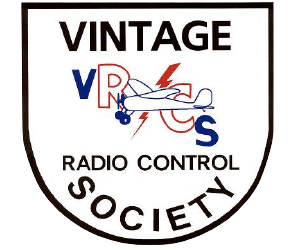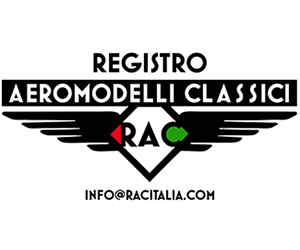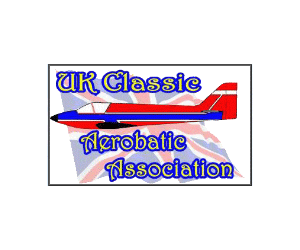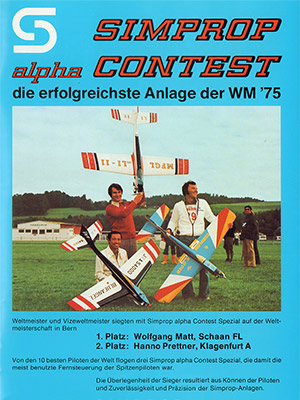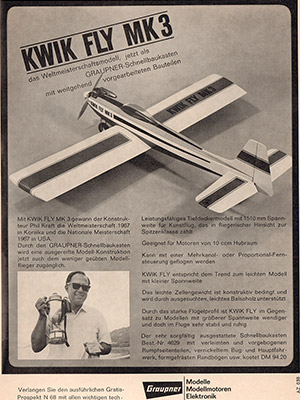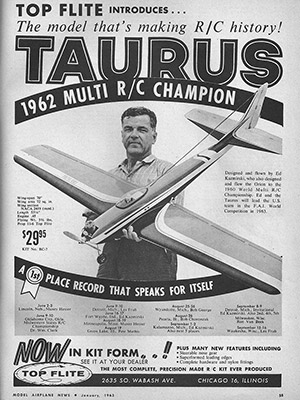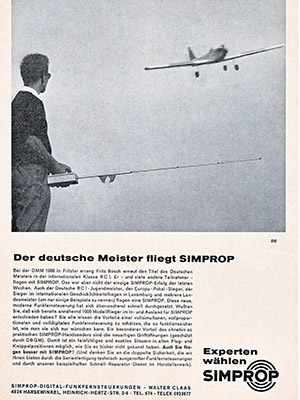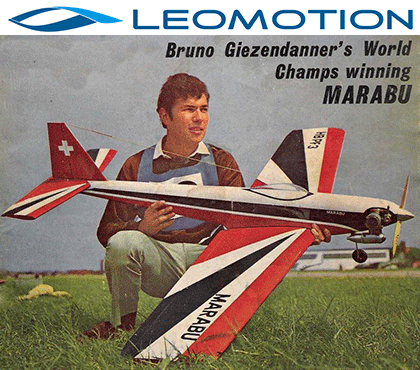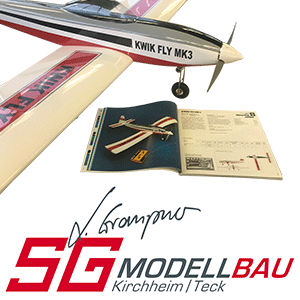
Las Vegas NV, 4-7 November 1982 Review. 1982 was the year of the Laser model aircraft. 9 of the 20 invited pilots from the USA and the rest of the world flew the Laser in the competition. Hanno Prettner from Austria continued his winning streak in this biennial showdown of the world’s best aeromodellers. It was flown and judged exactly according to the programme of the man-carrying aerobatics competitions.
The TOC (Tournament and Champions) was, alongside the World Model Aerobatic Championships, another highlight of the showdown of the world’s best model aerobatic pilots in 1982.
Since 1974, when Bill Bennet (Chairman of the Circus Circus Hotel / Casino) and Walt Schroder conceived the event, model aviation has been enriched by spectacle and development.
From the very beginning, the driving idea was to create an event that would eventually mimic in model form the same aerobatic spectacle as the manned wide-body aircraft flown by our big brothers.
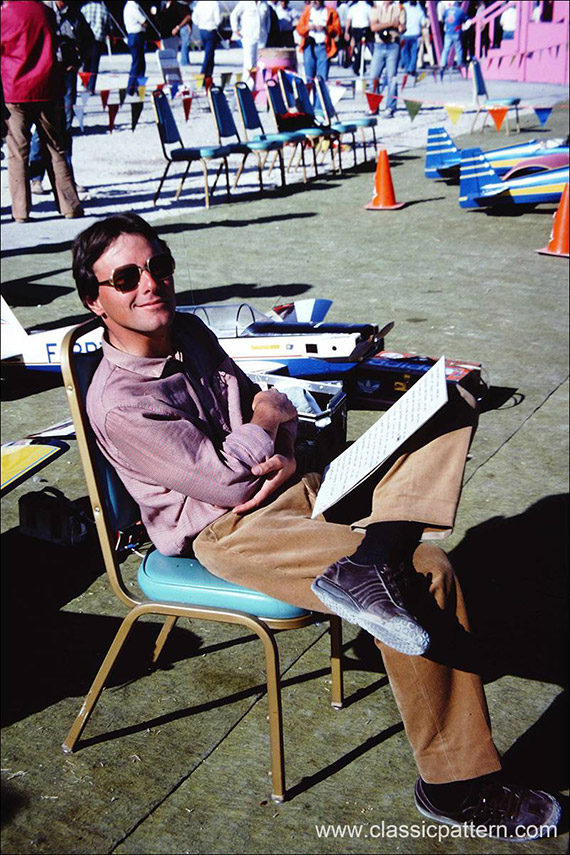
It has taken a lot of foresight and development over the years, but this year you could really say they have done it. Both the aircraft and the equipment used at the tournament represented the most advanced concepts in aircraft design, engine development and accessories currently in use.
The combination of an evolutionary change in aircraft requirements, patterns flown and other competition rules has created a class of model aircraft that can be said to be truly representative of a full-scale counterpart.
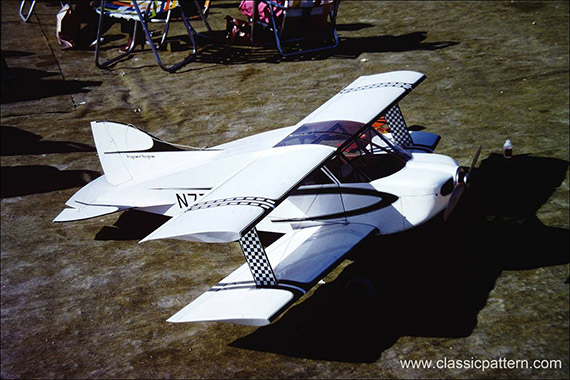
Flying an aerobatic model “in the Aresti Box”, Aresti-style, requires a relatively slow aircraft with low wing loading and high power loading. The large number of vertical manoeuvres requires a lot of thrust at low air speed and minimal weight.
If a composite aeroplane could be drawn from this year’s competition, it would be something like the following: an 18-pound monoplane with a wing area of 1,600 square centimetres, 20 x 10 propeller, two-cylinder engine with at least 3 hp, balsa frame and monokote covering.
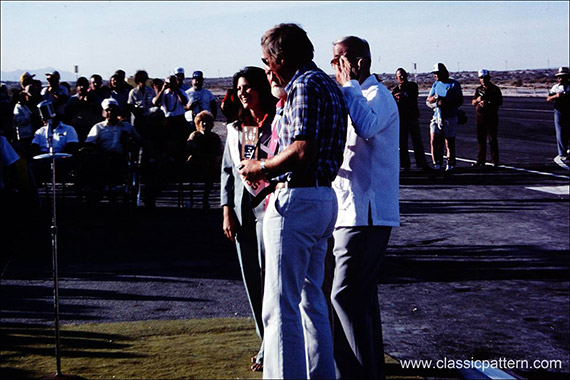
This was the year of the Laser 200 and Leo Loudenslager’s world championship medium wing design, as presented by master modeller Wayne Ulery, was flown by nine of the 20 participants. Wolfgang Matt also flew lasers.
His “number one” aircraft was his own design, and his replacement aircraft was Ulery’s design. You could truly say that Wayne had an enormous influence on aircraft design. Jeff Tracy’s CAP 21, Prettner’s Dalotel, Bertolani’s Yak 18 and Gilman’s Chipmunk were just some of the other designs.
In my opinion, I maintain that the Laser was the superior aircraft design. The fact is that I have never flown a better, more honest model than my Ulery Laser. It is pure joy to fly.
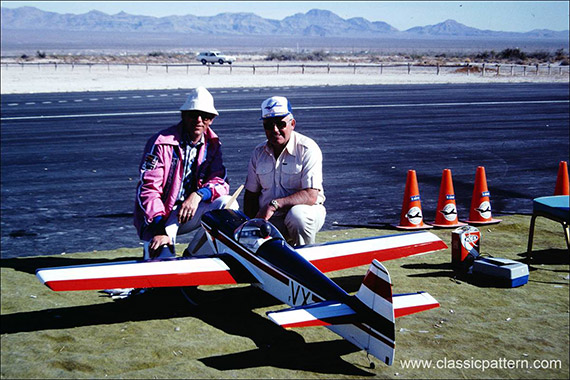
As in previous years, this year’s drive system was a real development project. The engines included the Tartan Boxer, Webra Boxer, the new Webra single-cylinder Bully and the large Magnum engine with a displacement of 57cc cc
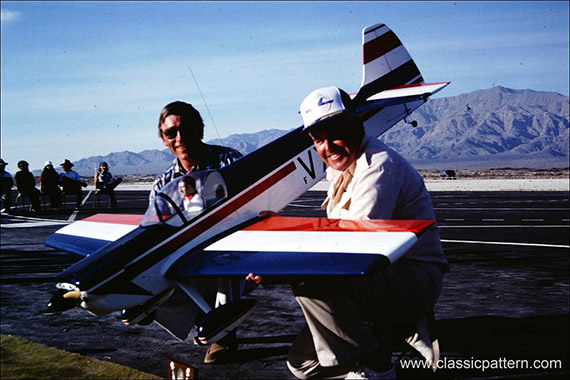

The most unique engine was Tony Frackowiak’s. Tony used two OS 90 motors. Tony built his system from the ground up with two pieces of 2:1 gearing, with the motors horizontally opposed but seated front to back (i.e. one forward and the other aft).
This configuration was chosen by Tony to allow for a contra-rotating propeller drive system, which he had tested on the dyno but was unable to use in competition due to lack of time as all the bugs had not yet been worked out.
His power system drove a 24 x 14 propeller and produced more than 15kg of static thrust!
It took Don Chapman from Dayton several months to develop the Tartan twin into a real powerhouse. This Chapman engine was used by Dave Brown, Mark Radcliff, Don Weitz and Dean Koger. Not only did it have many modifications, but it also included a tuned muffler system, also developed by Don.
One engine I really liked was the new 35cc Webra Bully used by Matt, Hoppe and Schweiker. The Bully, which will soon be available from Circus Hobbies, turned a 20×10 propeller at 8,000 rpm static!

For this purpose, a tuned exhaust system from Webra and a special narrow-blade propeller made of carbon fibre, which was sourced from Hoppe in West Germany, were used. This engine will be available in both glow and ignition versions – developed from the ground up for modelling.
The new 3.5-inch Magnum motor was used by Steve Helms, Tony Bonetti, Steve Stricker and Dave Wilson and appeared to have plenty of power to pull an aircraft of up to 10kg.
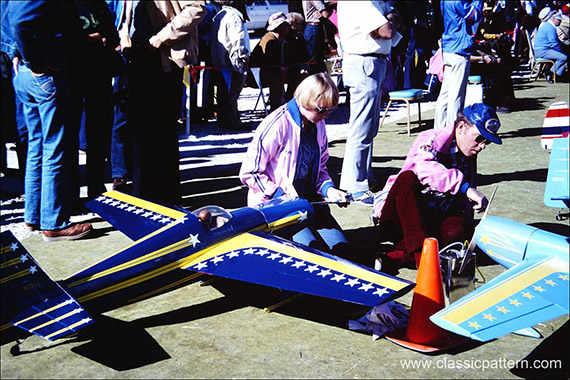
The flying at this T.O.C. was more demanding than ever. It was clear from the start that the reigning champion Hanno Prettner from Austria would fly very strongly – and he did.
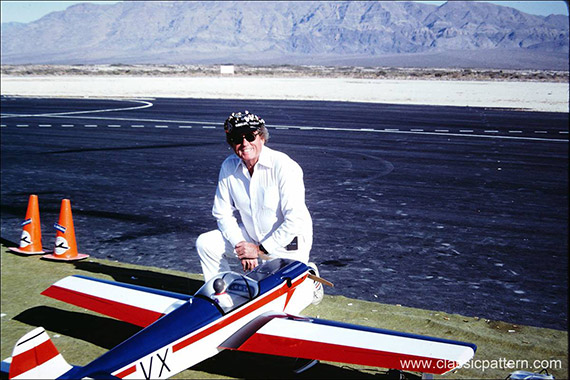
Thanks to his experience and flying style, he gained the necessary lead to win this competition of the world’s best model aircraft pilots for the 7th time in a row.
If you count this year’s winnings, he has won over 595,000 in prize money from competitions to date. Not a bad supplement to his income!
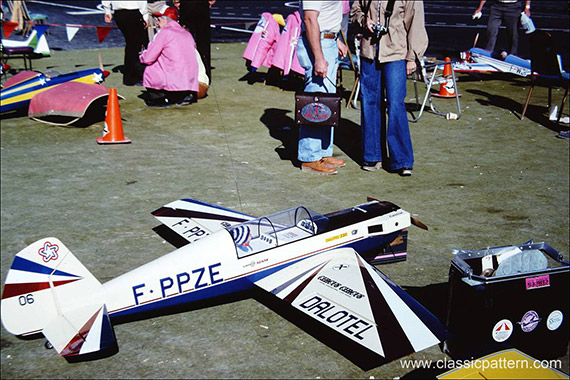
The competition jury consisted of a mixture of model and large-scale judges. The scores were then normalised using a computer system, as used in aerobatics in man-carrying aviation, to adjust the high and low scorers to the average.
I must say the judging was both fair and accurate. Great credit must go to the Chief Judge Jim Edwards and his assistant Clint Mc Henry for his excellent work as sporting director of the competition. Scoring is a very big problem in aeromodelling and not easy to do justice to everyone, at this T.O.C. the judges were very knowledgeable.

The aeroplanes used at this year’s event were replicas of man-carrying aerobatic aircraft. On the first day, 20 predetermined flight manoeuvres were flown.
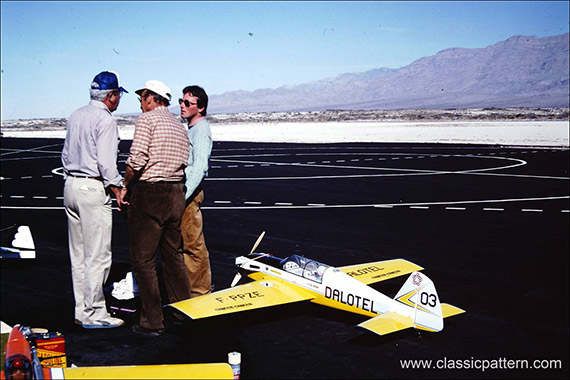
This predetermined flight sequence had been known to the pilots for some time. On the second day, an unknown freestyle was flown, which was given to the pilots by the jury the evening before. Nobody was allowed to practise the routine before the competition.
On the third day, a freestyle programme was flown that had been created by each individual participant and checked for accuracy before the competition. Five finalists were to be determined based on the point scores.
Hanno Prettner immediately took the lead, followed by Wolfgang Matt, Dave Brown, Don Lowe, Tony Frackowiak, Ivan Kristensen and the others. Day by day the placings looked like this:
Day: Hanno Prettner, Dave Brown, Don Lowe, Wolfgang Matt, Tony Frackowiak.
Day 2: Hanno Prettner, Wolfgang Matt, Wolfgang Matt, Dave Brown, Don Lowe. Ivan K. Kristensen.
Day 2 (also finalists); Hanno Prettner, Wolfgang Matt. Dave Brown, Tony Frackowiak, Ivan Kristensen. The unlucky one: Don Lowe!
The weather was perfect and did not have any influence on the course of the competition.
Several drivers had engine problems, including Ivan Kristensen, Jeff Tracy, Tony Frackowiak and also Wolfgang Matt. Poor Jeff had repeated problems on the second and third day of the race, after which it was too late for a serious challenge.
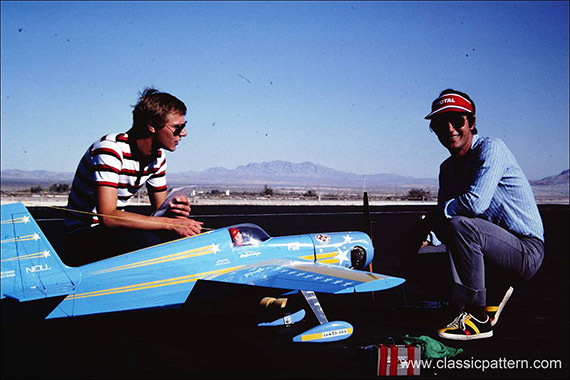
Don Lowe’s Tartan ran better and better from the second day onwards and certainly had an influence on his final position.
Dave Brown had a huge problem with the wing attachment, which spoilt his final.
There were no radio problems, all the RC systems were at the highest technical level. All the pilots were the best in the world, all were very careful with the equipment.
The final consisted of a fly-off with the previously determined competitors. Everyone flew two flights in an unknown sequence, one new unknown and one new higher “K” free-style. Interestingly, the placings in the fly-offs did not change at all.
The individual pilots’ scores were very close, and there was no clear favourite among the individual finalists until the very end. It was very exciting right to the end.
The final ranking of the 20 participants was as follows:
| Place | PilotCountry | Price | Plane | Engine | |
| 1. | Hanno Prettner | Austria | $25.000,00 | Dalotel | Twin St.75 |
| 2. | Wolfgang Matt | Liechtenstein | $12.000,00 | Laser (Matt) | Webra Bully |
| 3. | Dave Brown | Ohio | $9.000,00 | Laser (Ulery) | Tartan Twin |
| 4. | Tony Frakowiak | Ohio | $6.000,00 | Laser (Ulery) | Frack Twin OS .90 Drive |
| 5. | Ivan Kristensen | Canada | $5.000,00 | Laser (Ulery) | Webra Twin .60 |
| 6. | Don Lowe | Florida | $4.250,00 | Laser (Ulery) | Tartan Twin |
| 7. | Mark Radcliff | West Virgina | $4.000,00 | Laser(Ulery) | Tartan Twin |
| 8. | Steve Helms | Florida | $3.500,00 | Laser (Ulery) | Magnum II |
| 9. | Günter Hoppe | Germany | $3.250,00 | CAP 21 | Webra Bully |
| 10. | Don Weitz | Nevada | $3.000,00 | Laser(Ulery) | Tartan Twin |
| 11. | Ron Gilman | California | 2.500,00 | Chipmunk | Magnum II |
| 12. | Dean Koger | Nebraska | $2.500,00 | Laser (Ulery) | Tartan Twin |
| 13. | Werner Schweiker | Germany | $2.500,00 | CAP 21 | Webra Bully |
| 14. | Steve Stricker | Maryland | $2.500,00 | Chipmunk | Magnum II |
| 15. | Tony Bonetti | New Jersey | $2.500,00 | CAP 21 | Magnum II |
| 16. | Gilchi Naruke | Japan | 2.500,00 | Laser (Ulery) | OS .90 belt drive |
| 17. | Yoichiro Akiba | Japan | $2.500,00 | CAP 20L | Tartan Twin |
| 18. | Benito Bertolani | Italia | $2.500,00 | Yak 18 | Tartan Twin |
| 19. | Dave Wilson | California | 2.500,00 | Chipmunk | MagnumII |
| 20. | Jeff Tracy | Australia | $2.500,00 | CAP 21 | Webra Twin .60 |
The effort involved in organising and staging such a competition in Las Vegas is enormous, both for the management and for the pilots.
Special thanks certainly go to Bill Bennett who made it all possible, Mel Larson and the Circus Circus staff for their great efforts in making it so enjoyable, Phil Kraft (CD) and Jim Edwards (Chief Judge) as well as the many who worked behind the scenes of the tournament such as Sam Crawford, Marty Barry, Phil Rumbold, Betty and Suzy Stream, Pat Godfrey, Jackie Edwards and many others.
Great performances by the Eagles Aerobatic Team, the Kalt Factory Helicopter Team and the W. German Peter-Stuyvesant RC Formation Team added the icing to the cake.
The greatest joy for me was renewing old acquaintances and making new ones – spending time with people like Jeff Tracy, who, despite mechanical problems, was the epitome of good humour and camaraderie.
Communicating with Benno Bertolani and his wife was a lot of fun thanks to the sign language and limited English/Italian.
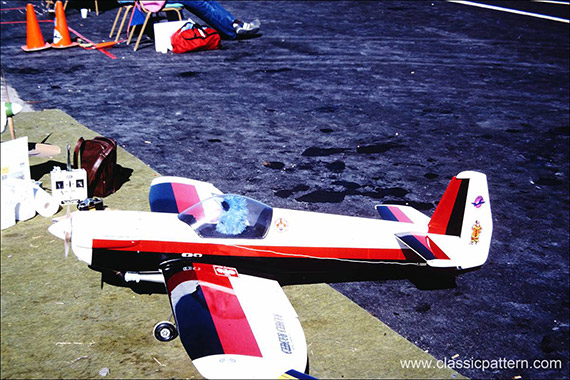
Helping some people solve problems, technical discussions with modellers from all over the world, talking to two-time world champion Doc Brooke (now blind) – these were all great pleasures.
For me, that was Vegas, and I hope it never ends!
Text: Classicpattern editors, Don Lowe
Photos: Erich Gilik

